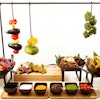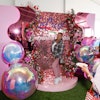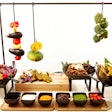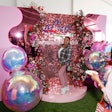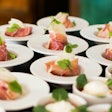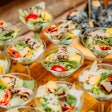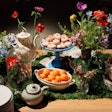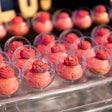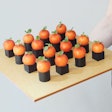This is part of our Business Entertaining 2008 special report.
Pacific Palisades: This tony Westside enclave is known more for its celebrity residents than for its dining choices, but Antonio Mure’s Il Carpaccio made waves when it opened in August. It’s simply decorated and neighborhood casual, but you’re as likely to see a Hollywood mogul as an Italian expat or a Getty Villa visitor communing over handmade pastas and glasses of wine.
Malibu: It might not have the view of some coastline restaurants, but what Terra lacks in sea spray it makes up for in creativity. The unpretentious Spanish-style cottage is owned by a couple who spent time in Sonoma, so it has a friendly yet sophisticated vibe. Open only for dinner, the main dining room offers a cozy fireplace, plus there’s a casual patio and a small bar. The menu features seasonal and mostly local ingredients, and changes frequently.Santa Monica: The owners of Magnolia and the Bar in Hollywood have created a 1930s-inspired French lounge adjacent to the Hotel Carmel. Chloe’s antique mirrors, tufted banquettes, and tiger-stripe ottomans create an intimate backdrop for an early- or late-evening Pimm’s Cup or French martini. With menu items like white bean and anchovy crostini, mini burgers, or decadent mac and cheese, there’s little need for the overrun Promenade restaurants a block away.
Manhattan Beach: Mucho Ultima Mexicana has many things going for it: a prime location close to the beach and the Shade Hotel (which shares the same owner), a comfortable and stylish space, and strong margaritas made with fresh-squeezed juices (watermelon, pomegranate, chipotle-pineapple). The menu features typical California and Mexican favorites such as battered fish tacos, chile rellenos, and enchiladas, plus homemade salsas and chips.
Long Beach: Tracht’s brings a little Hollywood sophistication to the Renaissance Long Beach hotel, courtesy of chef Suzanne Tracht, whose contemporary spin on classic pot roast and chophouse fare still packs her Jar restaurant in L.A. Tracht’s features 30-foot-high windows, a fire pit on the patio, and a private dining room for 25—plus, it’s close to the convention center.
Culver City: Akasha Richmond’s eponymous restaurant opened this month after much public anticipation. The space nods to total ecofriendliness in everything from the menus to the organic jeans the servers wear. The look is spare and restrained, with industrial-chic high ceilings and polished cement floors. Akasha serves breakfast, lunch, and dinner, with an organic and health food-inspired menu. The bakery beckons nearby Sony workers.
Close to LAX: An unexpected find near the airport, the 12-story Custom Hotel is sheathed in black but is colorful and eclectic inside. Its Bistrotek restaurant channels a SoHo-chic vibe with its industrial design. The open space has skylights, exposed pipes, concrete floors, and distressed brick walls. The dining room seats 74, a semiprivate room seats 28, and an outdoor patio seats 12.
Century City: There’s no doubt that Tom Colicchio’s Craft is a power-lunch hotspot. Colicchio opened the L.A. outpost adjacent to one of the biggest talent agencies in the area, surrounded by hotels and law offices. The organic palette of greens and browns, filament lights, and gauzy curtains create a comfortable space, and the tables and booths are just far enough apart for privacy. The seasonal menu is ideal for sharing.
Beverly Hills: The Bond Street restaurant in Jason Pomeranc’s new Thompson Hotel offers a 130-seat dining room, outdoor dining, and a sushi bar. The look, by Dodd Mitchell, is streamlined ’70s, with clean lines and textures like leather and suede, and a mezzanine bar and lounge with a private alcove. Designer Jenni Kayne and stylist Rachel Zoe dressed the servers; Hiroshi Nakahara relocated from Bond Street New York to serve as executive chef.
West Hollywood: Sona chef and owner David Myers opened Comme Ça, a contemporary French brasserie with a West Hollywood sensibility, because he wanted to serve the kind of food he loves to cook and eat. The results of his effort are impressive omelets and salad niçoise at breakfast and lunch, the best French onion soup and coq au vin in town, and a cheese bar and cocktails that are hard to beat.
Hollywood: The new location of Katsuya blends the edginess of its iconic Hollywood and Vine locale with contemporary Philippe Starck design, but still offers the creative Japanese fare and fresh sushi with which chef Katsuya Uechi’s name has become synonymous. Striking wall size photos of Japanese women with red-lipstick smeared mouths or dramatic eyes back the booths that surround the large sushi bar. A more intimate dining room has white leather sofas and Starck’s recognizable Ghost chairs. It’s as good for power lunches as it is for nighttime entertainment. Don’t skip S Bar next door—if you can get in.
Downtown: On the first floor of the Flat, a Holiday Inn-turned-swank apartment complex, Blue Velvet is a restaurant and lounge designed by Tag Front. Using sustainable products in many areas, the green space is stylish and comfortable. A Swiss-cheese-like wall separates two dining areas; one overlooks a pool, with the downtown skyline in the distance. In the lounge, marshmallow-like light fixtures hang over a 12-seat table. The Red Room has a separate bar and fireplace, a perfect setting for chef Kris Morningstar’s cutting edge American cuisine.
Woodland Hills: Morton’s, the Steakhouse opened in the new mixed-use Warner Center development in December, bringing the clubby atmosphere and consistent fare for which the chain is known to the Valley. But the bar is better than most, outfitted with plasma TVs, a patio, and a special martini list. Three boardrooms are available for dinner meetings.
Westwood: The iconic domed building in the middle of the neighborhood has been transformed into a contemporary Japanese restaurant. Yamato has dramatic arches, a sake cellar, a sushi chef from Matsuhisa, and a Japanese menu from Toshi Tamba, former executive chef of Okada at the Wynn Las Vegas. A bonus for the budget-minded: It looks and sounds much more expensive than it is.
Pasadena: The Cuban restaurant and lounge Mojitos picked up where its predecessor Xiomara left off, albeit with a more contemporary look—kind of Havana meets Hollywood, with exposed brick walls, high-backed brown banquettes, and dark wood accents. In happy news for the old venue’s regulars, the sugarcane mojitos, which complement the Latin-infused menu, remain. The back room holds 150.
Pacific Palisades: This tony Westside enclave is known more for its celebrity residents than for its dining choices, but Antonio Mure’s Il Carpaccio made waves when it opened in August. It’s simply decorated and neighborhood casual, but you’re as likely to see a Hollywood mogul as an Italian expat or a Getty Villa visitor communing over handmade pastas and glasses of wine.
Malibu: It might not have the view of some coastline restaurants, but what Terra lacks in sea spray it makes up for in creativity. The unpretentious Spanish-style cottage is owned by a couple who spent time in Sonoma, so it has a friendly yet sophisticated vibe. Open only for dinner, the main dining room offers a cozy fireplace, plus there’s a casual patio and a small bar. The menu features seasonal and mostly local ingredients, and changes frequently.Santa Monica: The owners of Magnolia and the Bar in Hollywood have created a 1930s-inspired French lounge adjacent to the Hotel Carmel. Chloe’s antique mirrors, tufted banquettes, and tiger-stripe ottomans create an intimate backdrop for an early- or late-evening Pimm’s Cup or French martini. With menu items like white bean and anchovy crostini, mini burgers, or decadent mac and cheese, there’s little need for the overrun Promenade restaurants a block away.
Manhattan Beach: Mucho Ultima Mexicana has many things going for it: a prime location close to the beach and the Shade Hotel (which shares the same owner), a comfortable and stylish space, and strong margaritas made with fresh-squeezed juices (watermelon, pomegranate, chipotle-pineapple). The menu features typical California and Mexican favorites such as battered fish tacos, chile rellenos, and enchiladas, plus homemade salsas and chips.
Long Beach: Tracht’s brings a little Hollywood sophistication to the Renaissance Long Beach hotel, courtesy of chef Suzanne Tracht, whose contemporary spin on classic pot roast and chophouse fare still packs her Jar restaurant in L.A. Tracht’s features 30-foot-high windows, a fire pit on the patio, and a private dining room for 25—plus, it’s close to the convention center.
Culver City: Akasha Richmond’s eponymous restaurant opened this month after much public anticipation. The space nods to total ecofriendliness in everything from the menus to the organic jeans the servers wear. The look is spare and restrained, with industrial-chic high ceilings and polished cement floors. Akasha serves breakfast, lunch, and dinner, with an organic and health food-inspired menu. The bakery beckons nearby Sony workers.
Close to LAX: An unexpected find near the airport, the 12-story Custom Hotel is sheathed in black but is colorful and eclectic inside. Its Bistrotek restaurant channels a SoHo-chic vibe with its industrial design. The open space has skylights, exposed pipes, concrete floors, and distressed brick walls. The dining room seats 74, a semiprivate room seats 28, and an outdoor patio seats 12.
Century City: There’s no doubt that Tom Colicchio’s Craft is a power-lunch hotspot. Colicchio opened the L.A. outpost adjacent to one of the biggest talent agencies in the area, surrounded by hotels and law offices. The organic palette of greens and browns, filament lights, and gauzy curtains create a comfortable space, and the tables and booths are just far enough apart for privacy. The seasonal menu is ideal for sharing.
Beverly Hills: The Bond Street restaurant in Jason Pomeranc’s new Thompson Hotel offers a 130-seat dining room, outdoor dining, and a sushi bar. The look, by Dodd Mitchell, is streamlined ’70s, with clean lines and textures like leather and suede, and a mezzanine bar and lounge with a private alcove. Designer Jenni Kayne and stylist Rachel Zoe dressed the servers; Hiroshi Nakahara relocated from Bond Street New York to serve as executive chef.
West Hollywood: Sona chef and owner David Myers opened Comme Ça, a contemporary French brasserie with a West Hollywood sensibility, because he wanted to serve the kind of food he loves to cook and eat. The results of his effort are impressive omelets and salad niçoise at breakfast and lunch, the best French onion soup and coq au vin in town, and a cheese bar and cocktails that are hard to beat.
Hollywood: The new location of Katsuya blends the edginess of its iconic Hollywood and Vine locale with contemporary Philippe Starck design, but still offers the creative Japanese fare and fresh sushi with which chef Katsuya Uechi’s name has become synonymous. Striking wall size photos of Japanese women with red-lipstick smeared mouths or dramatic eyes back the booths that surround the large sushi bar. A more intimate dining room has white leather sofas and Starck’s recognizable Ghost chairs. It’s as good for power lunches as it is for nighttime entertainment. Don’t skip S Bar next door—if you can get in.
Downtown: On the first floor of the Flat, a Holiday Inn-turned-swank apartment complex, Blue Velvet is a restaurant and lounge designed by Tag Front. Using sustainable products in many areas, the green space is stylish and comfortable. A Swiss-cheese-like wall separates two dining areas; one overlooks a pool, with the downtown skyline in the distance. In the lounge, marshmallow-like light fixtures hang over a 12-seat table. The Red Room has a separate bar and fireplace, a perfect setting for chef Kris Morningstar’s cutting edge American cuisine.
Woodland Hills: Morton’s, the Steakhouse opened in the new mixed-use Warner Center development in December, bringing the clubby atmosphere and consistent fare for which the chain is known to the Valley. But the bar is better than most, outfitted with plasma TVs, a patio, and a special martini list. Three boardrooms are available for dinner meetings.
Westwood: The iconic domed building in the middle of the neighborhood has been transformed into a contemporary Japanese restaurant. Yamato has dramatic arches, a sake cellar, a sushi chef from Matsuhisa, and a Japanese menu from Toshi Tamba, former executive chef of Okada at the Wynn Las Vegas. A bonus for the budget-minded: It looks and sounds much more expensive than it is.
Pasadena: The Cuban restaurant and lounge Mojitos picked up where its predecessor Xiomara left off, albeit with a more contemporary look—kind of Havana meets Hollywood, with exposed brick walls, high-backed brown banquettes, and dark wood accents. In happy news for the old venue’s regulars, the sugarcane mojitos, which complement the Latin-infused menu, remain. The back room holds 150.
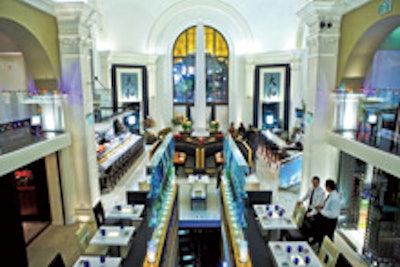
The main dining room at Yamato
Photo: Courtesy of Flower and Sense Communications
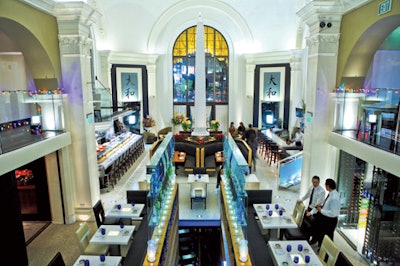
Yamato
Photo: Courtesy of Flower and Sense Communications
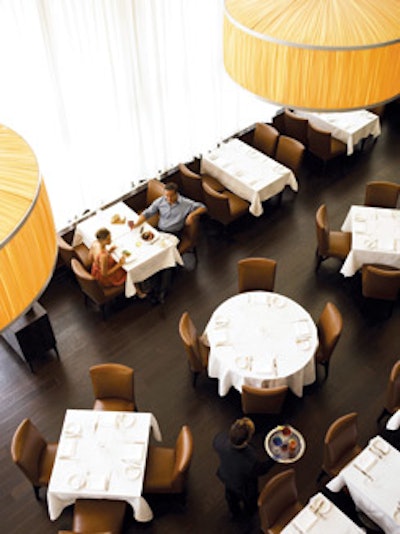
Tracht's
Photo: Dave Spataro Photography

Bond Street
Photo: Courtesy of Bond Street
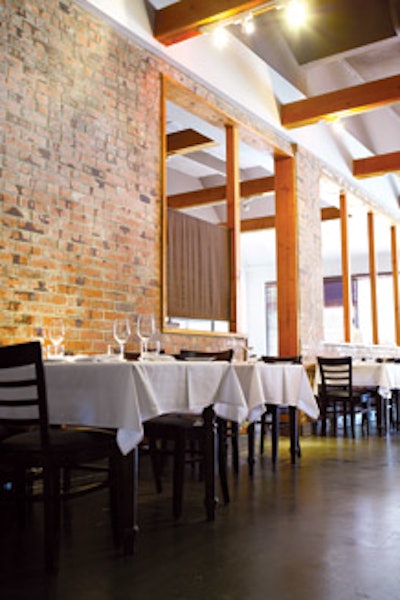
Il Carpaccio
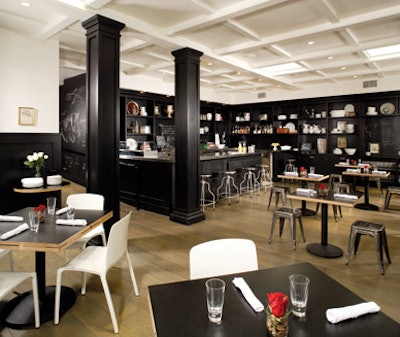
Comme Ça
Photo: Courtesy of Comme Ca
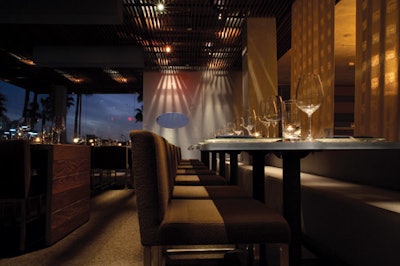
Blue Velvet
Photo: Grace Oh
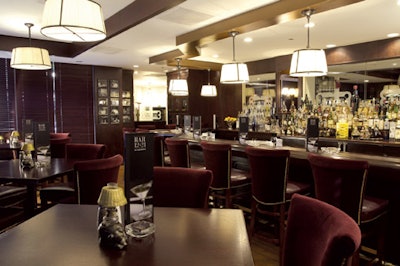
Morton's, the Steakhouse
Photo: Courtesy of Murphy O'Brien Public Relations


